The recent study shedding light on the potential risks associated with dog walks amidst the pandemic brings forth crucial considerations for pet owners. While the findings underscore certain hazards, the recommendations outlined offer valuable insights into safeguarding both human and animal health.
By delving into the nuanced aspects of dog walking safety during these challenging times, a deeper understanding of preventive measures and risk mitigation strategies emerges. As pet owners navigate the complexities of balancing exercise needs with health concerns, exploring the detailed guidance provided becomes imperative in fostering a safe and secure environment for all involved.
Key Takeaways
- Prioritize safety measures like wearing masks and avoiding crowded areas to reduce virus transmission risk.
- Follow recommended guidelines for safe dog walks to safeguard health and community well-being.
- Ensure pet health by monitoring signs of illness, seeking veterinary care promptly, and providing mental stimulation.
- Use DIY agility courses and interactive toys to keep pets mentally stimulated and engaged while at home.
Study Findings and Limitations
The study findings and limitations regarding dog walks during the pandemic shed light on the safety practices and risks associated with this common activity.
The study, based on an online survey with over 2,000 participants, revealed a higher risk of contagion for dog walkers. However, limitations such as the overrepresentation of women, underrepresentation of the elderly, and self-reported COVID-19 cases, were noted.
There was a lack of direct evidence linking dog walks to virus contraction, with a focus on limited allowable activities during lockdown.
These findings stress the importance of adhering to safe dog walking practices, such as wearing masks, walking alone or with household members, avoiding crowded areas, and washing hands upon returning home to mitigate COVID-19 risks.
Importance of Safe Dog Walking
Ensuring safe practices while walking your dog during the pandemic is crucial for minimizing the risk of virus transmission. Dog walks provide not only physical exercise for your furry companion but also mental stimulation and a break from being indoors.
However, with the current situation, it's essential to prioritize safety measures to protect both yourself and others. By following recommended guidelines such as wearing a mask, walking alone or with household members, avoiding crowded areas, and practicing proper hand hygiene, you can significantly reduce the risk of contracting or spreading the virus.
These precautions are vital in safeguarding your health and the well-being of your community while enjoying the benefits of outdoor activities with your dog.
Recommended Protective Measures
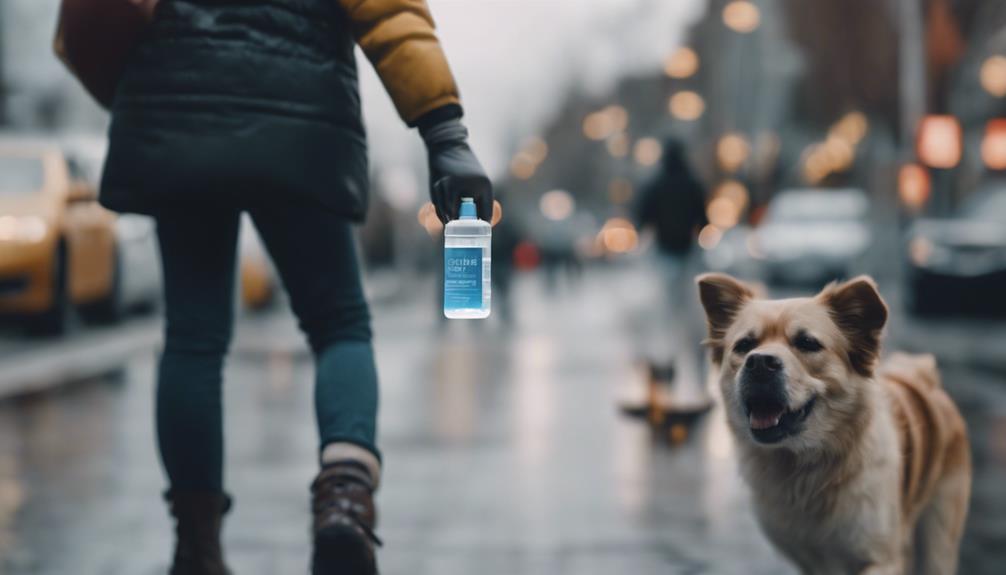
Implementing recommended protective measures is essential for safeguarding both dog walkers and their communities during the ongoing pandemic.
To reduce the risk of virus transmission while walking dogs, individuals should wear a mask covering their nose and mouth, walk alone or with household members, and avoid crowded areas and dog parks. It is crucial to wash hands thoroughly upon returning home to minimize potential exposure.
By following health guidelines, maintaining social distancing, and opting for less crowded walking routes, dog walkers can further mitigate COVID-19 risks. Regular handwashing and proper disposal of waste using poop bags are additional measures to prioritize.
These precautions aim to promote safety and prevent virus spread among dog walkers and their surroundings.
Minimizing COVID-19 Risk Factors
To reduce the likelihood of COVID-19 transmission during dog walks, adopting precautionary measures is crucial. One effective way to minimize risk factors is by following health guidelines and maintaining social distancing. Additionally, considering virtual dog exercises and opting for less crowded walking routes can help mitigate the risk. It is also important to regularly wash hands and use poop bags to prevent any potential spread of the virus. By being mindful of these strategies, dog owners can enjoy their walks with their pets while prioritizing safety.
| Precautionary Measures | Benefits |
|---|---|
| Wear a mask | Prevents droplet spread |
| Walk alone or with household members | Reduces exposure to others |
| Avoid populated areas | Minimizes contact risk |
| Wash hands | Removes potential virus particles |
| Use poop bags | Maintains cleanliness |
Potential Risks of Dog Walks
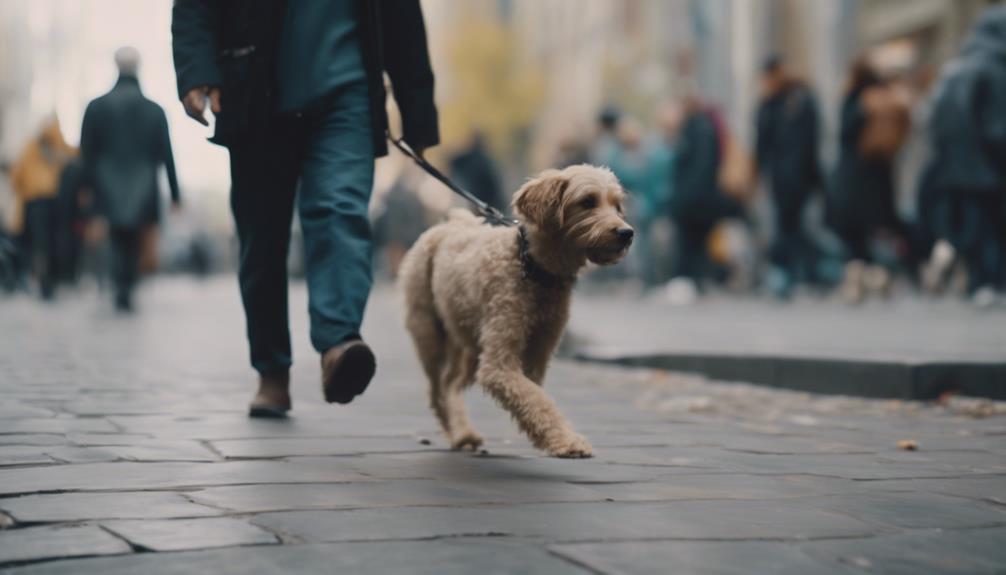
During the current pandemic, understanding the potential risks associated with dog walks is paramount for prioritizing the safety of both pet owners and their furry companions.
Dog walks present a higher risk of contagion for dog walkers, as they may come into contact with infected individuals or contaminated surfaces. Moreover, pets themselves can potentially contract the coronavirus, although cases are rare.
It is essential to emphasize preventive measures and caution in public spaces to minimize the risk of virus transmission.
Awareness of the potential for virus spread from humans to pets and vice versa is crucial in ensuring the well-being of both individuals and animals during outdoor activities like dog walks.
Precautions for Pet Owners
In light of the ongoing pandemic, pet owners must prioritize safety measures to safeguard both themselves and their beloved companions during outdoor activities like dog walks. It is crucial to wear a mask covering the nose and mouth, walk alone or with household members, avoid populated areas and dog parks, and wash hands upon returning home. Additionally, following health guidelines, maintaining social distancing, considering virtual dog exercises, opting for less crowded walking routes, and regularly washing hands and using poop bags can help mitigate the risk of COVID-19 while walking dogs. Being aware of the potential risks associated with dog walks during the pandemic and taking preventive measures can reduce the higher risk of contagion for dog walkers and the possibility of pets contracting the coronavirus.
| Precautions for Pet Owners | ||
|---|---|---|
| Wear a mask | Walk alone or with household members | Avoid populated areas and dog parks |
| Wash hands upon returning home | Follow health guidelines | Consider virtual dog exercises |
| Opt for less crowded walking routes | Regularly wash hands and use poop bags |
Promoting Indoor Dog Exercises
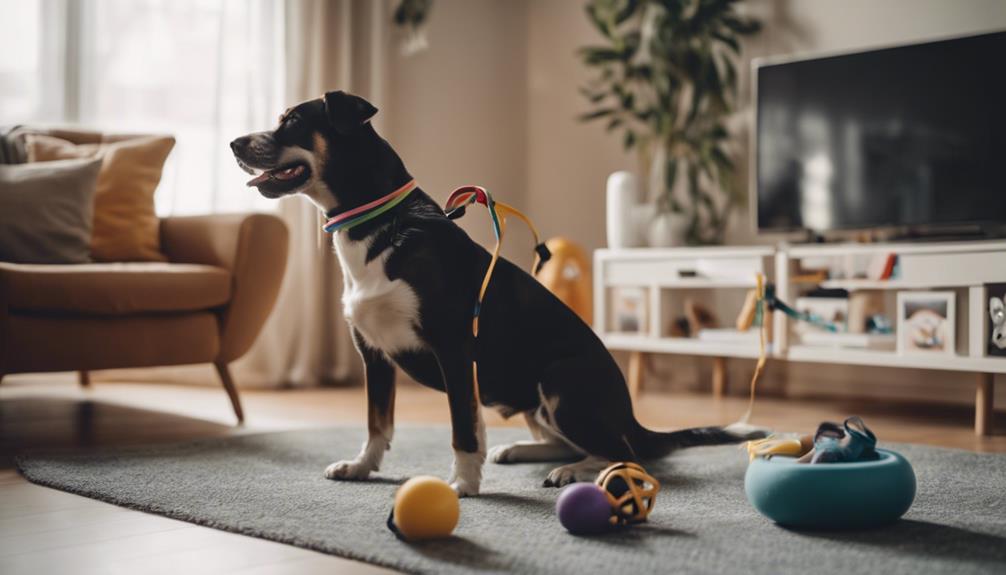
Encouraging pet owners to engage in indoor dog exercises can provide both physical and mental stimulation for their furry companions. In inclement weather or when outdoor walks are not feasible, indoor activities are a great alternative to keep dogs active and engaged. Interactive toys, such as treat puzzles or tug ropes, can help maintain physical fitness and mental sharpness.
DIY agility courses using household items can also offer a fun way to challenge dogs and promote agility. Additionally, exploring virtual doga classes or following guided indoor exercise routines tailored for dogs can ensure they receive adequate physical activity while staying safe indoors.
These indoor exercises are essential for maintaining a healthy and happy lifestyle for pets, especially during times when outdoor activities pose risks.
Virtual Exercise Options for Dogs
Exploring virtual exercise options for dogs offers a convenient and innovative way to keep pets physically active indoors. Virtual doga classes, interactive toys, and DIY agility courses provide mental stimulation and physical activity for dogs without the need for outdoor walks.
Platforms offering virtual dog exercises cater to various fitness levels and can be tailored to suit different breeds and sizes. These virtual options not only help maintain a dog's physical health but also provide mental enrichment, which is crucial for their overall well-being.
Mental Stimulation for Pets
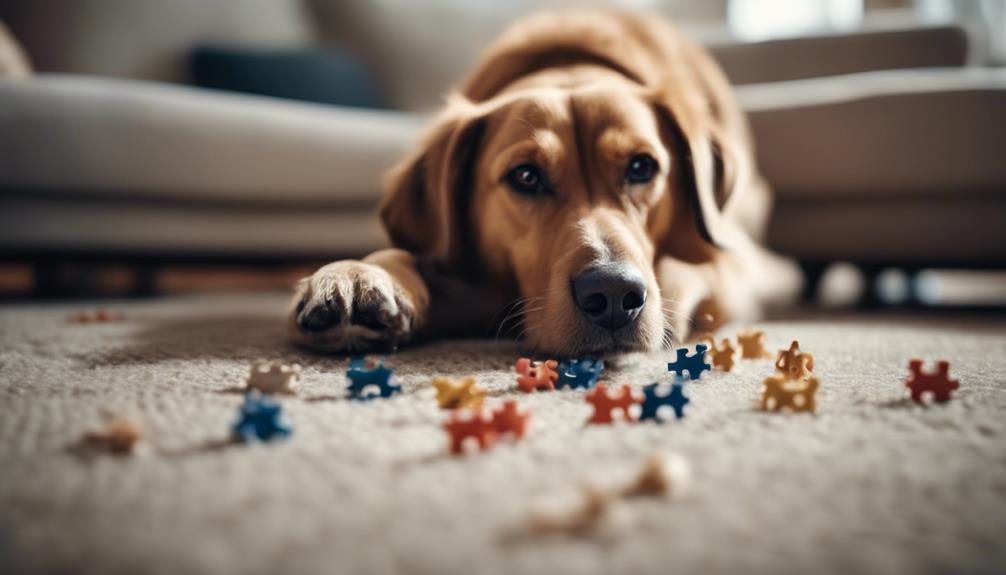
Providing adequate mental stimulation for pets is essential for maintaining their overall well-being and preventing behavioral issues. Mental stimulation can help keep pets engaged, satisfied, and less likely to exhibit destructive behaviors.
Here are some ways to provide mental stimulation for your pets:
- Rotate their toys regularly to keep them interested
- Use puzzle feeders to make mealtime more engaging
- Teach them new tricks or commands to challenge their minds
- Create scavenger hunts around the house to encourage exploration
Interactive Toys for Dogs
Interactive toys for dogs offer a stimulating and engaging way to keep your furry companion entertained and mentally sharp. These toys come in various forms, such as treat-dispensing puzzles, interactive balls, and tug toys. They provide mental stimulation, encourage physical activity, and prevent boredom, especially when outdoor walks are limited.
Interactive toys can help alleviate anxiety, improve problem-solving skills, and strengthen the bond between you and your pet. When selecting interactive toys, consider your dog's size, breed, and play style to ensure suitability and safety. Rotate the toys regularly to maintain your dog's interest and prevent monotony.
DIY Agility Courses at Home
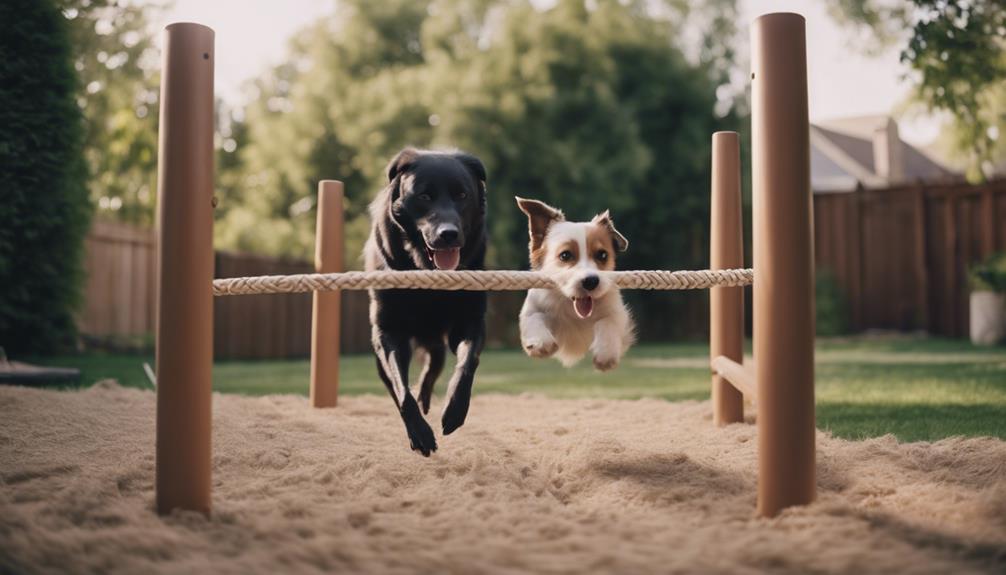
To further enhance your dog's physical agility and mental acuity while at home, consider setting up DIY agility courses tailored to your pet's size and energy level. Creating these courses can provide a fun and stimulating way for your dog to exercise and stay active indoors. Here are some tips to help you set up an engaging agility course for your furry friend:
- Use household items creatively to design obstacles such as tunnels and jumps
- Incorporate commands like 'sit,' 'stay,' and 'jump' to make the course interactive
- Start with simple challenges and gradually increase the difficulty level
- Reward your dog with treats or praise for successfully completing each section of the course
Ensuring Pet Health and Safety
Ensuring the health and safety of pets is paramount, particularly during times of heightened health concerns such as the current pandemic. Pet owners should prioritize regular vet check-ups, vaccinations, and proper nutrition to maintain their pet's well-being.
It is crucial to monitor pets for any signs of illness, such as lethargy, loss of appetite, or difficulty breathing, and seek veterinary care promptly if needed. Additionally, providing pets with mental stimulation and physical exercise within the confines of safety guidelines is essential.
General Tips for Dog Owners
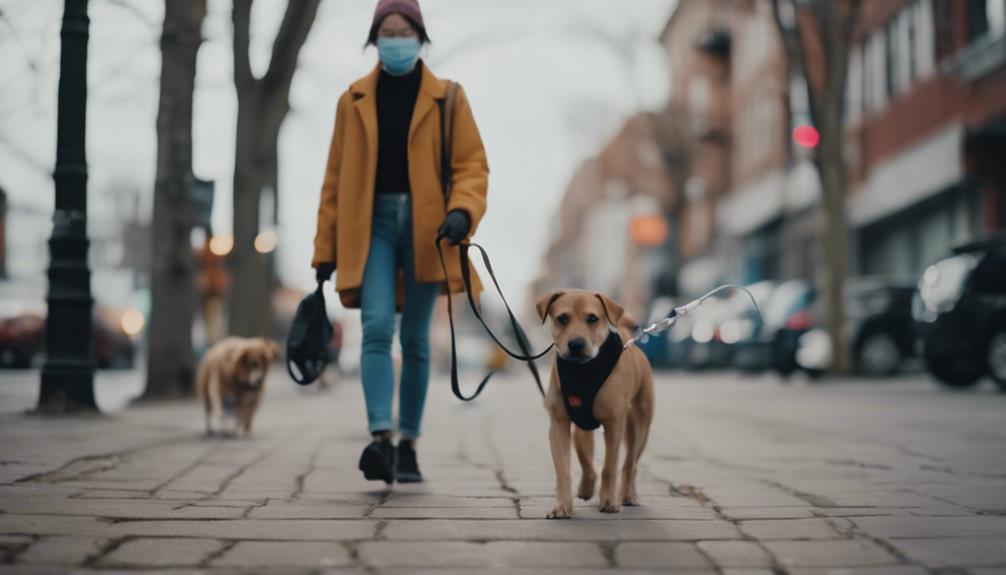
Pet owners should prioritize their dog's well-being by implementing general tips to ensure a healthy and safe environment for their furry companions. It is important to follow certain guidelines to mitigate the risks associated with dog walks during the pandemic. Here are some general tips for dog owners:
- Regularly sanitize your hands and use poop bags
- Opt for less crowded walking routes
- Consider virtual dog exercises as an alternative
- Wash hands upon returning home
Summary and Key Takeaways
In light of the risks associated with dog walks during the pandemic, it is crucial to emphasize key safety practices and considerations for dog owners. Safe dog walking practices include wearing a mask, walking alone or with household members, avoiding crowded areas, and washing hands upon returning home.
To mitigate COVID-19 risks while walking dogs, follow health guidelines, consider virtual exercises, opt for less crowded routes, and maintain hand hygiene. Understand the higher contagion risk for dog walkers, the potential for pets to contract the virus, and the importance of preventive measures in public spaces.
For indoor alternatives, explore virtual doga classes, provide mental stimulation, use interactive toys, and consider DIY agility courses to ensure the well-being of pets during these challenging times.
Conclusion
In conclusion, the study on dog walking risks during the pandemic emphasizes the importance of implementing safety measures to protect both pet owners and their furry companions.
While the limitations of the study warrant cautious interpretation, it is crucial to prioritize preventive practices such as wearing masks, practicing proper hand hygiene, and exploring indoor exercise alternatives.
By being mindful of potential health hazards and taking proactive steps, dog owners can ensure the well-being of themselves and their pets during these challenging times.




